This article was co-authored by Steve Horney PT, MPT, MTC, CSCS. Steve Horney is a Licensed Physical Therapist and the Owner of Integrated Health Sciences, a New York City-based company that provides continuing education, health care products, and manual and movement physical therapy. Steve has over 15 years of academic and professional physical therapy training and specializes in the assessment and treatment of athletes with the goal of helping them become pain-free and less susceptible to injury. Steve is also a certified strength and conditioning specialist (CSCS) from the National Strength and Conditioning Association (NSCA). He received a BS in Health Science from Quinnipiac University in 2004 and a Masters of Physical Therapy (MPT) from Quinnipiac University in 2006. He then completed his Manual Therapy Certification (MTC) from the University of St. Augustine in 2014.
There are 8 references cited in this article, which can be found at the bottom of the page.
This article has been viewed 12,064 times.
Standing desks have significant health benefits and can reduce the discomfort that comes from sitting down for long periods of time. However, if they are not used correctly they can cause fatigue. By adjusting your workspace and learning the basic body postures, you can enjoy the benefits of using a standing desk.
Steps
Adjusting Your Work Space
-
1Adjust the table so that it is at the height of your elbows. When you are typing or using your mouse, your arms should be at a 90° angle or just below; this will allow you to move your arms smoothly and avoid wrist strain. Before adjusting the desk, make sure that all computer cables have been unplugged and there are no loose items on the desktop.[1]
-
2Position your screen at eye level.[2] Adjusting your screen to the right position will help to minimise eye strain. Position the primary monitor directly in front of you, and the second screen (if applicable) to the side where you use your mouse.
- If possible, move the monitor so that it is approximately 1 arm length away from where you will stand.[3]
Advertisement -
3Purchase ergonomic accessories if needed. If you have a limited height desk or a fixed height desk you may need some accessories to help you adjust your workspace to your needs. Purchase an adjustable keyboard platform and an adjustable monitor arm and attach them to the standing desk. These will enable you to adjust the height of your keyboard and monitor to a more comfortable position.[4]
- Adjust your monitor arm to eye level or slightly below. If you notice yourself craning your neck while working try raising the arm slightly.
- Adjust the keyboard platform so that your arms form a 90° angle. When you lower the desk to sit down ensure that you re-adjust the keyboard platform to a comfortable height.[5]
-
4Keep a chair nearby so you can easily sit down when your feet get tired. Trying to work all day in a standing position when you are used to sitting can be jarring to your body and result in leg or back pain. Over time your body will get used to standing for long stretches, but initially you will need to sit down regularly to rest your legs. Keep a comfortable upright chair beside your desk so that you can easily lower your desk and sit down during the day.
- Avoid having the chair directly behind you so you don’t trip over when walking around.
- Ideally, recline your chair slightly to protect your lower back. You might need a footrest to comfortably do this.[6]
Positioning Your Body
-
1Wear comfortable shoes. Standing will increase the pressure on your feet so it is important to wear shoes that don't hurt your feet. Everyone's feet are different so experiment with what works best for you.
- Avoid wearing high heel shoes and flat shoes with no padding.
- Running shoes or thick soled business shoes are good options as they offer arch support.
- If your workplace allows it, try working barefoot. Some people find this option puts less strain on their feet. [7]
-
2Maintain a straight back and neck. Having good posture helps to avoid back pain and fatigue caused by constricted blood vessels. Stand up straight so that your spine is in an ‘S’ curve. Keep your shoulders back, neck straight and head up.
- Avoid leaning on the desk as this causes your back and neck to curve. [8]
-
3Rest your feet on a leaning stool if your feet are aching. If your legs are getting tired quickly from standing, a leaning stool may help you. These stools place your body in a perching position where your body is at a 120° angle. The increased angle, compared to a chair, improves your circulation and helps to take pressure off your feet.
- If the stool has wheels, make sure these are locked before leaning on the stool.
- Use the stool by resting your weight on the seat and keeping both feet on the floor. [9]
-
4Position your wrists horizontally. Hold your wrists so that they form a straight line with your arms. Avoiding raising them above horizontal as this can lead to wrist strains. If you find that your wrists get tired throughout the day try lowering your desk slightly to a more comfortable position.
- Consider purchasing a wrist rest to help support your wrists, especially if you have had previous wrist strains.[10]
Avoiding Fatigue
-
1Place an anti-fatigue mat under your feet. These mats provide a cushioned surface for you to stand on and will help to reduce the pressure on your feet. You may find that you can stand significantly longer when using a mat, especially if your office has hard floors.[11]
-
2Alternate between sitting and standing. If you are used to sitting most of the day it is important to ease into using a standing desk. When first using a standing desk it is recommended to stand for no longer than an hour total per day. As you feel your body get less fatigued, slowly increase your standing time up to 4 hours per day.[12] .
- You should have a 3:1 ratio of standing to sitting time. For instance, if you stand for 45 minutes, you can sit for 15 minutes.[13]
- Creating a sitting-standing schedule can help you monitor your daily standing time.
-
3Stretch throughout the day. Regular stretching is an easy way to increase your energy and lessen the stiffness in your body. When you stretch, try to exercise each of the muscle groups in your legs.[14]
- Stretch your hamstrings by standing with your feet shoulder-width apart and legs straight. Gently bend down towards your feet until you feel a stretch in the back of your legs. Hold the stretch for 30 seconds.[15]
- Stretch your calf muscles throughout the day by standing on your toes for 5 seconds at a time. Hold onto the desk to help keep your balance.
-
4Vary your stance by alternating which foot holds your weight. Changing your stance will help keep you alert and increase your circulation. Experiment with different stances that feel comfortable. Remember to maintain correct posture.
- Try starting with your feet together and every few minutes slightly increase the distance between them until they are just past shoulder width.
- If you find your feet aching, try using a footstool to give your feet a break. Place a footstool in front of you. If you don’t have a footstool try using a box or thick book. Rest one foot on the footstool and lean on the other, after a few minutes switch your feet over.[16]
References
- ↑ http://www.gadgetreview.com/how-to-properly-use-a-standing-desk
- ↑ Steve Horney PT, MPT, MTC, CSCS. Licensed Physical Therapist. Expert Interview. 3 March 2020.
- ↑ http://workriteergo.com/facts-about-standing-desks/
- ↑ http://workriteergo.com/facts-about-standing-desks/
- ↑ http://workriteergo.com/facts-about-standing-desks/
- ↑ Steve Horney PT, MPT, MTC, CSCS. Licensed Physical Therapist. Expert Interview. 3 March 2020.
- ↑ http://www.gadgetreview.com/how-to-properly-use-a-standing-desk
- ↑ https://www.startstanding.org/proper-workplace-ergonomics/
- ↑ https://www.startstanding.org/proper-workplace-ergonomics/
- ↑ https://www.startstanding.org/proper-workplace-ergonomics
- ↑ https://www.startstanding.org/proper-workplace-ergonomics/
- ↑ https://www.health.harvard.edu/blog/the-truth-behind-standing-desks-2016092310264
- ↑ Steve Horney PT, MPT, MTC, CSCS. Licensed Physical Therapist. Expert Interview. 3 March 2020.
- ↑ http://deskhacks.com/reduce-standing-desk-fatigue/
- ↑ https://teeter.com/blog/5-stretches-standing-desk/
- ↑ http://deskhacks.com/reduce-standing-desk-fatigue/
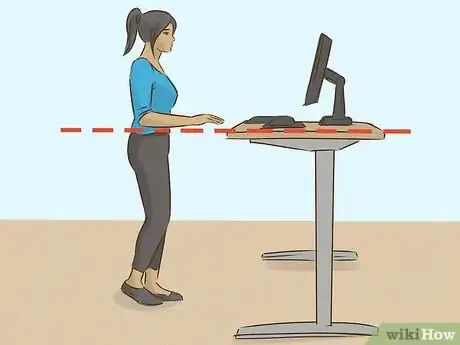
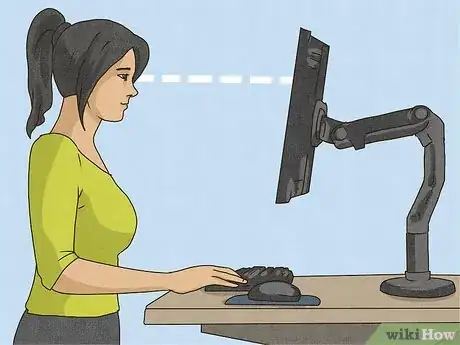

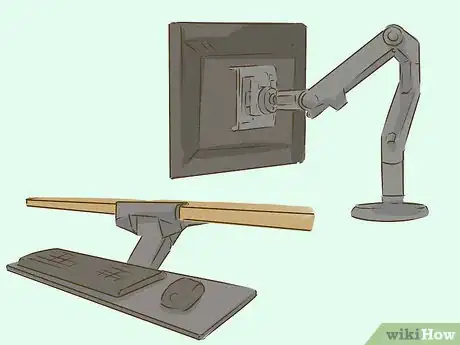
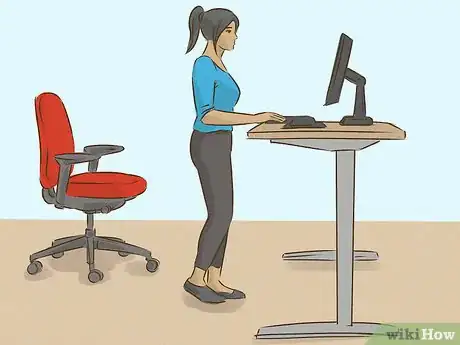
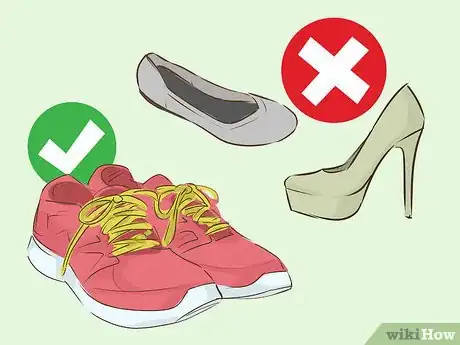
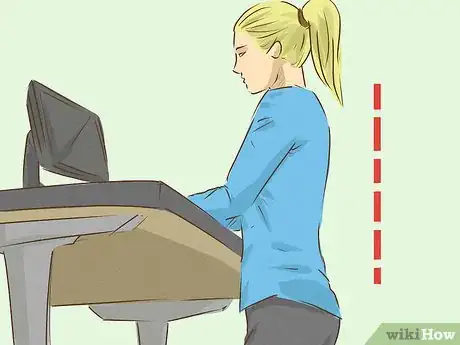
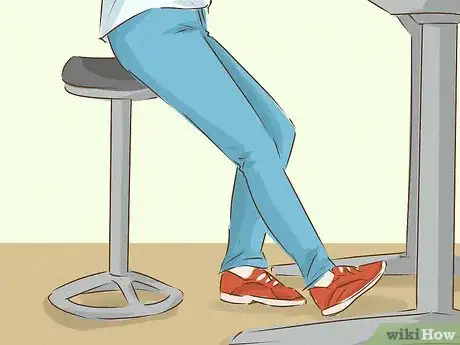
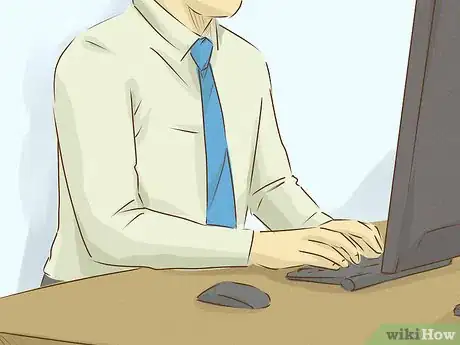
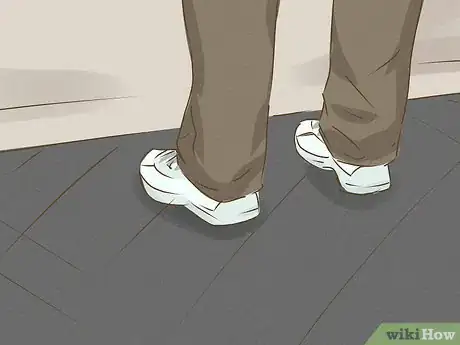

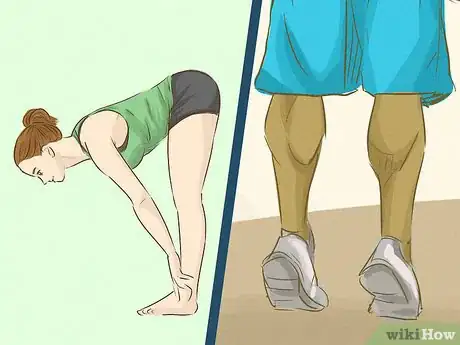
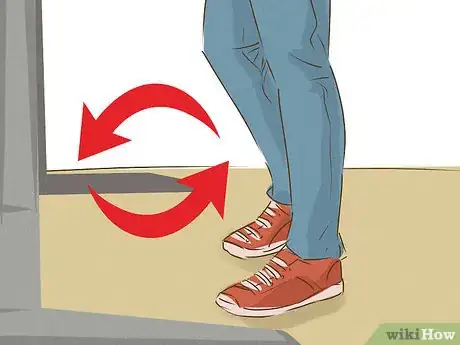




















































Medical Disclaimer
The content of this article is not intended to be a substitute for professional medical advice, examination, diagnosis, or treatment. You should always contact your doctor or other qualified healthcare professional before starting, changing, or stopping any kind of health treatment.
Read More...